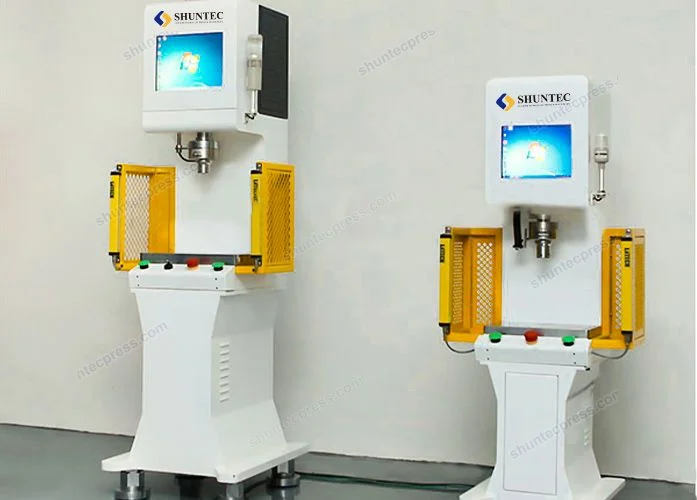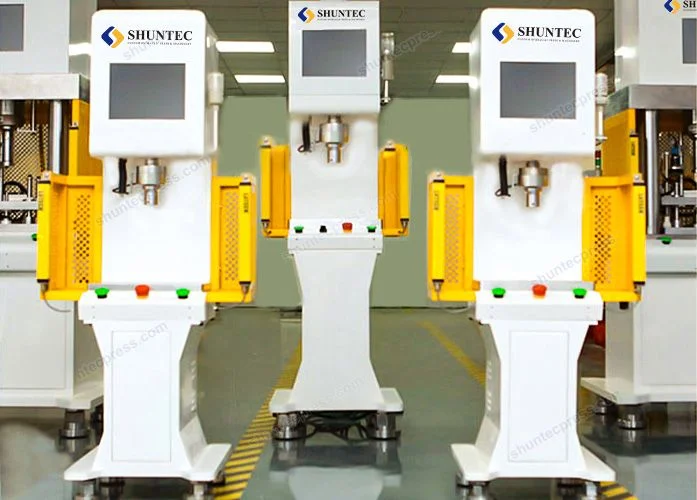

Precision or accuracy is a term mentioned a lot in press machines. It is also very important for any other kinds of machines. Precision means that the machine can achieve the desired result as much as possible in terms of sizes, shapes, and other details of the work pieces. As far as press machines are concerned, the issue of precision is the top priority to consider for press machine designers.
1. About Servo Technology
Now there is a relatively new technology that has been applied to and combined with press machines to achieve a higher level of precision and better performance of the machine. It is called servomechanism, or short for servo technology. Servo technology is often used in control engineering to realize the control of position, speed, and others. A servo system works on the principle of negative feedback. When there is a difference between the control input value and the actual value, the system will give an error signal and guide the machine to reduce and eliminate the error, so that the machine can realize the results (such as position, speed, etc.) desired by the operator( such as the driver).
In conclusion, a servo system uses the negative feedback mechanism to eliminate the difference between the actual value and desired value, so the control precision can be high. By contrast, if the operator uses sense organs, such as sight and hearing, to control a machine, it is difficult (if not impossible) for him to detect and eliminate the difference between the actual value and desired value, thus the control precision can be relatively low.
2. Servo Press
Servo presses usually refer to presses that are driven by a servo motor, whereas traditional hydraulic presses use a standard electric motor, flywheel, clutch, and brake. It includes servo presses for metal forging and special servo presses for refractory materials and other industries. Because of the numerical control characteristics of the servo motor, the servo press is also widely known as the numerical control press.
The servo press uses a servo motor to drive the eccentric gear to realize the motion of the sliding block. Through complex electrical control, the servo press can program the stroke, speed, pressure, etc. of the slider arbitrarily,
and can reach the nominal tonnage of the press even at low speeds. This can be better manifested by the following example.
When stamping sheet metal, if the processing speed is constant, then for some part of the sheet, the amount of force may be appropriate, while for another part, the force may be excessive and thus results in poor forming. Conventional presses solve this problem by decreasing the processing speed to avoid excessive force throughout the whole stamping motion, which also decreases productivity to a considerable extent. By comparison, a servo press offers a completely new solution for this issue. A servo press is driven at high-speed mid-way through the stamping motion, and when it comes close to the bottom dead center, the speed is lowered. In this way, both forming results and productivity can be guaranteed without sacrificing either one of them.
3. Advantages Of Servo Press
Compared with traditional presses, servo presses have the following advantages:
1. Improve productivity: due to the adoption of CNC and servo motor, servo presses can achieve complex press control. The stroke length can be set to a smaller value that is necessary for production. The forming speed can be adjusted at different points throughout the whole process to fit different materials and different parts of the material, so as to guarantee to form quality as well as productivity.
2. Energy saving and environmental protection: intelligent servo energy-saving system is adopted in servo press, which saves electricity by 50%-70%.
3. High safety level: a servo press is equipped with an infrared safety grating to effectively protect the operator,
4. High precision level: servo presses operate on the principle of negative feedback and can achieve a higher precision level than ordinary press machines. The repeated positioning accuracy of a servo press can reach 0.01mm, and the pressure error is ±1%.
5. Low failure rate: The servo intelligent control system does not do idle work. For example, when the slider is quickly descending or stationary at the upper limit, the servo motor will not rotate, which not only saves electric power but reduces failure rate and ultimately prolongs the service life of electrical components as well.
6. Stability: the press adopts an integrally welded frame structure with built-in sensors. The sliding block is guided by a precision guide rail. The whole machine is stable and precise with strong shock resistance and lateral pressure resistance. It is suitable for blanking, forming, and extrusion, and other processes.
7. Convenient maintenance: The whole machine is designed into a modular structure according to different functional modes, and it is easy to disassemble and assemble. General faults can be directly viewed through the touch screen, and the maintenance is simple.

